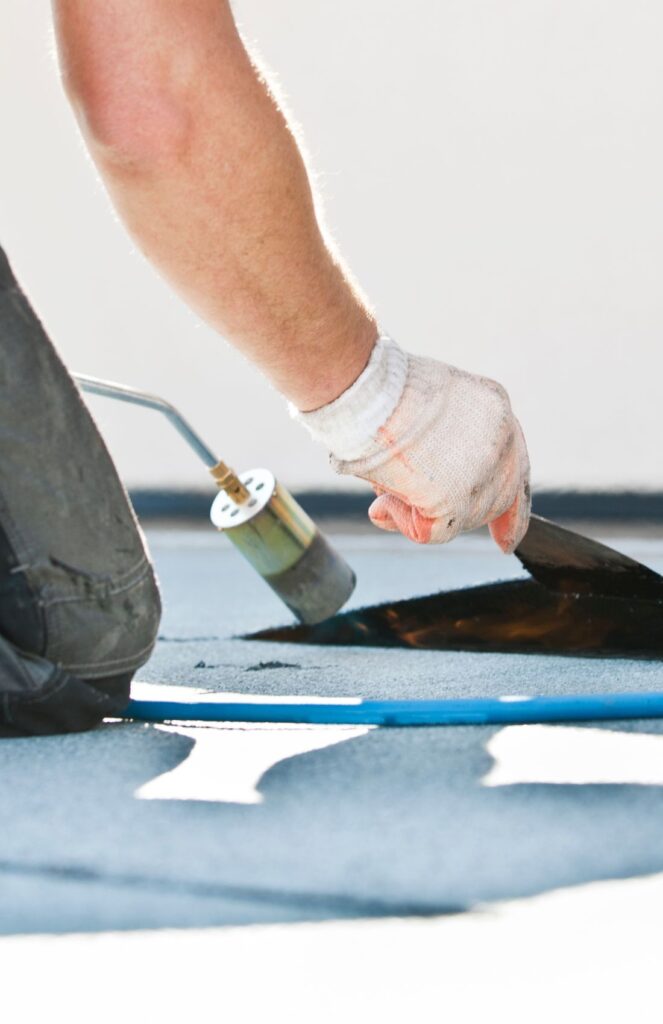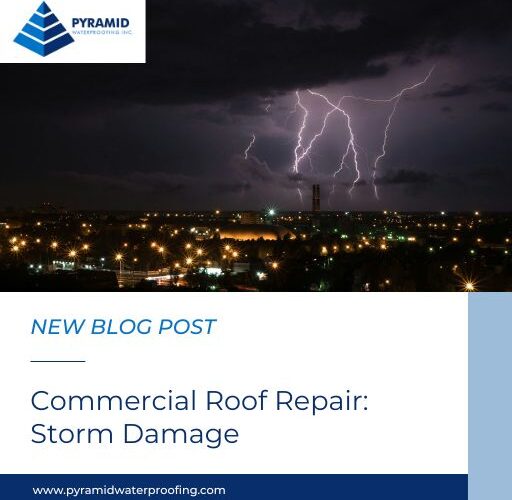Commercial Roof Repair: Storm Damage
With the recent storms hitting the Houston area and more to come, it’s important to know what steps to take in case your commercial flat roof is damaged. After a storm, any damage should be addressed immediately to prevent water infiltration and structure damage.

Inspections After a Storm
We recommend having your roof inspected after any extreme weather conditions. It is a crucial step to ensuring the safety and structural integrity of your building. One of our team members will conduct a visual inspection and look for any signs of damage such as pooling water, tears, punctures, loose or bent flashing, or other damage to the roofing membrane. The drainage system will also need to be checked to make sure it is not clogged with debris after the storm. The roof should also be checked for structural damage that might not be as obvious such as sagging. After the inspection, our team will provide you with a comprehensive report and inform you if any repairs are needed.
Types of Storm Damage on a Flat Roof
Water Damage – Heavy rain and debris can clog roof drainage and cause ponding water. When water ponds on a flat roof, it can cause water infiltration and leaks at the roofing seams.
Hail Damage – Extreme weather and storms are often accompanied by hail. Hail can dent and puncture the roofing membrane.
Wind Damage – When wind is too heavy, it can cause wind uplift on the roof edges and flashing. It can also blow debris onto the roof and cause punctures.
Repair or Replace?
Deciding to repair or replace the commercial roof will depend on a number of factors and the assessment of the roof’s condition during the inspection. Our roofing professionals will look at the age of the roof and the extent of damage. If the insulation is not damaged, our team can often patch leaks or tears, reseal seams, and replace flashing.
By understanding the types of storm damage and the importance of inspections after extreme weather events, you can protect your building and prevent any storm damage from becoming a major issue. To learn more about having your roof inspected after a storm, contact us through our website here.
